#vinton cerf
Text

the internet is truly a magical place
#what a time to be alive#I wonder how Robert Kahn and Vinton Cerf would feel about how far we’ve come?#😂
194 notes
·
View notes
Text

Biyolojinin babası Aristotoles
Fiziğin babası Albert Einstain
Kimyanın babası Cabir bin Hayyan
Zoolojinin babası Aristotoles
Tarihin babası Herodotus
Microbiyolojinin babası Louis pasteur
Botaniğin babası Theophrastus
Elektiriğin babası Benjamin Franklin
Geometrinin babası Öklid
Modern Kimyanın babası Antoine Lavoisier
Elektroniğin babası Michael Faraday
Internetin babası Vinton Cerf
Genetiğin babası Gregor Johan
Tıp ın babası Hipokrat
Mimari ve statiğin babası Sinan.
...
Tazminat ödemenin babası KeMAL
Kaybetmenin dayısı KeMAL
Yalancının kayınçosu KeMAL
Maral aplanın halası KeMAL
75 notes
·
View notes
Text
𝓔𝓿𝓸𝓵𝓾𝓬𝓲ó𝓷 𝓭𝓮 𝓵𝓪 𝓲𝓷𝓽𝓮𝓻𝓯𝓪𝔃 𝓰𝓻á𝓯𝓲𝓬𝓪 𝓭𝓮 𝓾𝓼𝓾𝓪𝓻𝓲𝓸
Las tecnologías de información tuvieron su Génesis en la Guerra Fría.
La informática ya utilizada para fines militares durante la segunda Guerra mundial tuvo un enorme avance en el período de post guerra.
Las computadoras eran grandes calculadoras en hardware eran complejo y manejarlo requería conocimientos, donde los datos se almacenaban de forma genética a través de cintas.
RED MUNDIAL
JOSEPH CARL ROBNETT - 1960
Dijo que de aquí a 10 o 15 años, incorporará las funciones de las bibliotecas.
DOUGLAS ENGELBART WORKSTATION - 1996
Primer mouse
Primera interfaz gráfica
Primer sistema de hipertexto.
• ARRANCA ARPANET - 1969
Primer enlace exitoso
INTERNET - VINTON CERF - 1970
Habla de la red internacional y de las posibilidades de la conexión global.
CORREO ELECTRÓNICO - RAY TOMLINSON
Primer email denominado CYPNET, que permitía a los usuarios mandar y recibir ficheros entre diferentes ordenadores.
MICROSOFT - BILL GATES Y PAUL ALLEN
En los 80's dominaría el mercado de las computadoras personales.
APPLE - STEVE JOBS & STEVE WOZNIAK - 1976
Empezó vendiendo 200 copias.
XEROX ALTO - 1973
Primera computadora en utilizar la metáfora del escritorio.
El Diagrama del papel
Texto negro fondo blanco el área de trabajo como el papel blanco folders hojas y el escritorio.
De la Interfaz gráfica a la interfaz Humana
JEFF RASKIN & STEVE JOBS
Una informática intuitiva y amigable
La Metáfora del Escritorio
Sistema operativo mas usado.
1ra PC MULTIMEDIA - 1985
Se genera audio, reproductor, etc.
GUI NEXT Computer - 1990
El énfasis de representación de la personalidad de los usuarios a quienes estaba destinado el sistema reproductores gráficos y artistas las carpetas no son folders amarillos oficinistas se asemejan en cambio a portafolios de artistas arquitectos y diseñadores.
HIPER TEXTO - TIM BERNERS - 1991
Del texto al hipertexto.
Esta tecnología permitió la visualización de páginas interconectadas y representadas visualmente a través de un navegador. Las páginas web que hoy conocemos y utilizamos.
Tim Berners crea el primer navegador llamado WorldWideWeb.
APPLE MAC OS X 2002
El concepto de computadoras destinadas a la producción gráfica y artística.
WINDOWS XP 2001
El sistema gráfico busca representar una interfaz familiar y agradable.
El lenguaje gráfico de los globos virtuales ha nacido. Los elementos generan volumetría en un estilo caricaturesco.
WINDOWS Vista 2007
La sofisticación en la evolución de los de las representaciones, la adicción de la materialidad con desenfoques emulación de vidrio y metal, representados en un sistema ineficiente.
Los reproductores de MP3 permitían cenar 25 canciones en un formato limitado de 100 MB de almacenamiento.
Desde que surge la telefonía celular y rápidamente se masifica. Marcas y dispositivos plantean un nuevo mercado de comunicaciones.
Los modelos más económicos buscaban acercarse a las presentaciones de teléfonos de gama más alta.
Los dispositivos celulares ya contaban con pantallas de color toque a través de muchas veces de un lápiz adicional acceso limitado a internet.
¡PHONE 1 - 2007
El primer teléfono inteligente, como los denominamos ahora significó un gran cambio ya que traía consigo la posibilidad de instalaciones como múltiples aplicaciones.
Ahora se interactúa con gestos y toques sin un teclado físico.
Microsoft plantea un nuevo sistema de navegación en el sistema operativo Windows 8.
Este sistema es plano y simple.
Sin embargo genera una ola de cambios en el lenguaje y gráfico de las interfaces que repercute en dispositivos móviles y en sitios de internet.
3 notes
·
View notes
Text
Aproximadamente hace 52 ,53 años se creo el Internet en esa epoca conocida como Arpanet con fines militares en EE.UU durante la guerra fria , en 1970 arpanet ingresa a universidades en estados unidos
en 1971 se envia lo que se conoce como el primer E-mail lo que paso ah hacer un simple intento ya que despues de varias horas de trabajo se caeria la red :(
tambien contamos con la creacion del simbolo arroba (@) creado por ray tomlinson
en 1973 arpanet tiene su primera conexion internacional
en 1974 Se utiliza el término Internet por primera vez de forma oficial para designar el protocolo TCP, una herramienta fundamental para facilitar la interconexión (internetworking). Uno de sus autores es Vinton Cerf, considerado uno de los máximos pioneros de la red
para 1976 apple seria fundado por steve jobs y wozniak llamandolo apple computer
en 1981 se crearia la primera pc el lanzamiento del IBM 5150 en agosto de 1981 cambió el rumbo de la informática doméstica. No fue el primer ordenador personal como tal, pero sí el que transformó la industria por completo
amediados de 1989 se crearia el www que significa world wide web
1993 se conoceria el primer navegador web mosaic fue el primer navegador web gráfico disponible para visualizar páginas web en sistemas operativos como Mac, Windows u otros. Este navegador web fue creado en enero de 1993, en el National Center for Supercomputing Applications, por Marc Andreessen y Eric Bina.
asi ah evolucionado el internet hasta el que poseemos ahora
muchas gracias por su amable tiempo
2 notes
·
View notes
Text
World Wide Web founder — Tim Berners-Lee on the evolution of the IT sector
What is the Internet and who founded the Internet
Vinton Cerf and Bob Kahn are the individuals to whom we can give credit for inventing the internet. They designed the IT sector telecom protocols for the internet. In the beginning, this Internet wasn’t meant for long-distance communication, and neither did we have technology for it that could do so. It was created to establish a network between universities.
What is the WWW or the World wide web

The origin of the World Wide Web happened at the CERN labs, and it was for the interconnected communication medium between scientists. It was used to share information among scientists.
Tim Berners-Lee founded the World Wide Web.
The basic idea of the WWW was to merge the evolving technologies of computers, data networks and hypertext into a powerful and easy to use global information system.
CERN
What is the difference between World Wide Web (WWW) and Internet
People often confuse with the WWW and Internet, although there is difference between WWW and Internet.
Internet is the global network system, while WWW stands for the World Wide Web.
If the Internet is an infrastructure, then the WWW is a service provider.
Internet can be viewed as the big oceanic ecosystem, while the WWW is one of the ecosystems that exist in the ocean.
Internet is like hardware, and WWW is software.
While the Internet uses IP addresses, the WWW uses HTTP.
Internet connects computer networks all around the world, while WWW provides information that can be accessed via the internet.
Read more at-
World Wide Web founder - Tim Berners-Lee on the evolution of the IT sector - MUNDUS 2035
Vinton Cerf and Bob Kahn are the individuals to whom we can give credit for inventing the internet. They designed the…mundus2035.com
also read-
Solar system — Almost everything you need to know — MUNDUS 2035
Our solar system is a complex network of celestial bodies gravitationally bound to the Sun, which resides at its…mundus2035.com
Depiction Beyond The Gods: Transcending Divinity in the Celestial Odyssey — MUNDUS 2035
Depictions Beyond the Gods” by Mundus Gnosis explores the evolution of astronomy in ancient Greece and the…mundus2035.com
0 notes
Text
Important MCQs Asked In Previous Paper Part 3
Important MCQs Asked in Previous Papers | Specially for NTS, ECAT, MCAT, CSS, PPSC, ETEA, KPSC
Pak MCQs is your go-to educational website providing a comprehensive collection of MCQs for all exams and job employment tests, including NTS, ECAT, MCAT, CSS, PPSC, ETEA, KPSC. Whether you are preparing for competitive exams or entry tests, our platform offers an extensive array of questions that are crucial for your preparation.
MCQs for All Exams and Job Employment Tests
Our MCQs are meticulously curated to cater to a wide range of exams and job tests. Whether you are preparing for MCAT, ECAT, or any entry test, Pak MCQs provides you with essential questions that will help you excel.
Why MCQs are Essential for Test Preparation
MCQs are a fundamental part of most competitive exams and offer several benefits:
Test Knowledge and Understanding:
MCQs help in evaluating your grasp of various subjects.
Enhance Problem-Solving Skills: Regular practice of MCQs improves your ability to solve problems quickly and accurately.
Cover a Wide Range of Topics: MCQs cover numerous topics, ensuring comprehensive preparation.
Advanced and Basic Level MCQs
We offer a wide variety of MCQs ranging from basic to advanced levels. These questions are designed to cater to intermediate and graduate-level students, helping them in their test preparations.
Reliable and Updated Content
All our MCQs are sourced from reliable materials and are regularly updated to reflect the latest exam patterns and trends. This ensures that you have access to the most current and relevant questions.
Important MCQs with Answers
We provide detailed answers to all our MCQs, helping you understand the concepts better and learn effectively. Below are some example MCQs from previous papers that are crucial for your exam preparation:
These MCQs for All Exams and jobs employment test and specially for MCAT, ECAT and Entry Test and For All Test Preparation(NTS, CSS, PPSC, ETC..). If you are looking IMPORTAN MCQs with answer so you are in right place. We have thousands of IMPORTAN MCQs Advance and Basic Level MCQs. It is for intermediate and graduate level bio multiple choice question. These of all multiple choice question are helpful in every test preparation. All intermediate and graduate exams MCQs. A great opportunity to improve your skills and perform batter in study. This mcqs will help in you in every science test. The following all mcqs we have get from reliable source.
21) In which Surah obligations of ablution are described?
(A) Al-Baqrah
(B) Al-Maidah
(C) Al-Noor
(D) Al-An'aam
22) Which one of the following is considered to be one of the fathers of the internet?
(A) Vinton Gray Cerf
(B) Bill Gates
(C) Charles Babbage
(D) Steve Jobs
23) The Federally Administered Tribal Areas (FATA) consist of:
(A) Five Agencies
(B) Six Agencies
(C) Seven Agencies
(D) Eight Agencies
24) Qazaf means:
(A) False accusation of adultery
(B) False accusation of robbery
(C) False accusation of rape
(D) False accusation of murder
25) If A and B together can complete a job in 15 days and B alone can complete it in 20 days, in how many days can A alone complete the job?
(A) 60
(B) 45
(C) 40
(D) 30
26) Choose the synonym of "Sepulchral":
(A) Cheerful
(B) Mournful
(C) Resonant
(D) Roaring
27) Complete the idiom "The more things change, the more they ___":
(A) Begin to improve
(B) Repeat history
(C) Stay the same
(D) Resist change
28) In Information Technology what does HTML stand for?
(A) Hyper Text Method Language
(B) Hyper Text Markup Language
(C) Hyper Text Markup Logic
(D) Hyperlink Text Markup Language
29) Head office of Asian Infrastructure Investment Bank is located in which city?
(A) Shanghai
(B) Doha
(C) Canton
(D) Beijing
30) Ceasefire UN Military Observer Group in India and Pakistan established to report on violations:
(A) 1952
(B) 1949
(C) 1950
(D) 1951
Benefits of Using Pak MCQs
Extensive Question Bank: Thousands of MCQs covering various subjects and levels.
Free Access: All our resources are available for free, ensuring that every student has the opportunity to excel.
User-Friendly Interface: Our website is easy to navigate, allowing you to quickly find the questions you need.
Regular Updates: Stay updated with the latest questions and trends in competitive exams.
Join Our Community for More Updates
We encourage you to share this valuable resource with others to help them in their test preparations. For more daily updates, follow us on our social media platforms:
Find More MCQs At : PAK MCQs
0 notes
Text
Here are 20 of the most significant inventions that changed the world, detailing their significance, accomplishments, and how they helped mankind:
1. **The Wheel**
- **Significance**: One of the oldest and most fundamental inventions, the wheel enabled transportation and mechanization.
- **Accomplishments**: Facilitated the movement of goods and people, leading to the development of trade and complex societies.
- **Impact**: Revolutionized agriculture, industry, and daily life.
2. **Printing Press**
- **Inventor**: Johannes Gutenberg
- **Significance**: Made mass production of books possible.
- **Accomplishments**: Enabled the spread of knowledge, contributing to the Renaissance, Reformation, and the Scientific Revolution.
- **Impact**: Increased literacy rates and access to information.
3. **Electricity**
- **Key Figures**: Benjamin Franklin, Thomas Edison, Nikola Tesla
- **Significance**: Powers modern civilization.
- **Accomplishments**: Development of the electric light, power grids, and countless electrical devices.
- **Impact**: Transformed industries, improved quality of life, and enabled technological advancements.
4. **The Internet**
- **Inventors**: Vinton Cerf and Robert E. Kahn (among others)
- **Significance**: Revolutionized communication and information sharing.
- **Accomplishments**: Creation of the World Wide Web, email, social media, and e-commerce.
- **Impact**: Global connectivity, instant access to information, and new economic opportunities.
5. **The Telephone**
- **Inventor**: Alexander Graham Bell
- **Significance**: Revolutionized long-distance communication.
- **Accomplishments**: Facilitated personal and business communication.
- **Impact**: Connected people globally, influencing social and economic interactions.
6. **Penicillin**
- **Discoverer**: Alexander Fleming
- **Significance**: First true antibiotic.
- **Accomplishments**: Revolutionized medical treatment for bacterial infections.
- **Impact**: Saved countless lives and reduced mortality rates from infections.
7. **The Automobile**
- **Inventors**: Karl Benz, Henry Ford
- **Significance**: Transformed personal and commercial transportation.
- **Accomplishments**: Mass production techniques (e.g., Ford's assembly line).
- **Impact**: Enabled suburbanization, changed urban planning, and created new industries.
8. **The Airplane**
- **Inventors**: Wright brothers
- **Significance**: Made air travel possible.
- **Accomplishments**: Enabled fast global travel and transport of goods.
- **Impact**: Shrunk the world, fostering international trade and cultural exchange.
9. **The Personal Computer**
- **Inventors**: Steve Jobs, Steve Wozniak, Bill Gates (among others)
- **Significance**: Made computing accessible to individuals.
- **Accomplishments**: Development of user-friendly interfaces and software.
- **Impact**: Revolutionized work, education, and entertainment.
10. **The Compass**
- **Significance**: Improved navigation.
- **Accomplishments**: Enabled sea exploration and global trade.
- **Impact**: Led to the Age of Exploration and the discovery of new lands.
11. **The Steam Engine**
- **Inventor**: James Watt (improvements)
- **Significance**: Powered the Industrial Revolution.
- **Accomplishments**: Mechanized production and transportation.
- **Impact**: Transformed industries and economies, leading to urbanization.
12. **Vaccination**
- **Inventor**: Edward Jenner
- **Significance**: Prevented infectious diseases.
- **Accomplishments**: Eradication of smallpox, control of polio, measles, and more.
- **Impact**: Increased life expectancy and improved public health.
13. **The Light Bulb**
- **Inventor**: Thomas Edison (among others)
- **Significance**: Provided artificial light.
- **Accomplishments**: Extended working hours and improved safety.
- **Impact**: Enabled the development of modern cities and industries.
14. **The Automobile Assembly Line**
- **Inventor**: Henry Ford
- **Significance**: Revolutionized manufacturing.
- **Accomplishments**: Mass production of affordable cars.
- **Impact**: Made cars accessible to the masses, transforming society.
15. **The Transistor**
- **Inventors**: John Bardeen, Walter Brattain, William Shockley
- **Significance**: Fundamental to modern electronics.
- **Accomplishments**: Miniaturization of electronic devices.
- **Impact**: Enabled the development of computers, smartphones, and other digital technology.
16. **The Radio**
- **Inventors**: Guglielmo Marconi, Nikola Tesla (among others)
- **Significance**: Wireless communication.
- **Accomplishments**: Revolutionized mass media and information dissemination.
- **Impact**: Connected people globally and influenced culture and politics.
17. **The Camera**
- **Inventors**: Joseph Nicéphore Niépce, Louis Daguerre (among others)
- **Significance**: Captured and preserved images.
- **Accomplishments**: Development of photography and film.
- **Impact**: Influenced art, documentation, and communication.
18. **The Refrigerator**
- **Inventor**: Multiple inventors over time
- **Significance**: Preserved food.
- **Accomplishments**: Improved food safety and storage.
- **Impact**: Reduced food waste and revolutionized the food industry.
19. **The Microchip**
- **Inventors**: Jack Kilby, Robert Noyce
- **Significance**: Enabled the development of modern electronics.
- **Accomplishments**: Miniaturization and increased power of devices.
- **Impact**: Integral to computers, smartphones, and numerous other technologies.
20. **The Internet**
- **Inventors**: Multiple contributors, including Vinton Cerf and Robert E. Kahn
- **Significance**: Revolutionized communication and information sharing.
- **Accomplishments**: Creation of the World Wide Web, email, and e-commerce.
- **Impact**: Transformed global connectivity, access to information, and economic opportunities.
These inventions have profoundly impacted human civilization, driving progress in various fields and improving the quality of life for countless people worldwide [oai_citation:1,Best models ever: supermodels from the 1950s to the 1990s | Marie Claire UK](https://www.marieclaire.co.uk/news/fashion-news/best-models-ever-18806) [oai_citation:2,Top 50 Supermodels of All Time](https://www.listchallenges.com/top-50-supermodels-of-all-time) .
0 notes
Text
what is open vpn tcp
🔒🌍✨ Get 3 Months FREE VPN - Secure & Private Internet Access Worldwide! Click Here ✨🌍🔒
what is open vpn tcp
OpenVPN protocol
Title: Understanding the OpenVPN Protocol: Secure Connectivity for the Digital World
In today's interconnected digital landscape, ensuring secure and private communication is paramount. OpenVPN protocol stands out as a robust solution, providing a versatile and reliable framework for secure virtual private network (VPN) connections.
At its core, OpenVPN utilizes open-source technology, fostering transparency and collaboration among developers worldwide. This open approach not only encourages innovation but also enhances the protocol's security through constant scrutiny and improvement.
One of the key strengths of OpenVPN is its ability to operate on various platforms, including Windows, macOS, Linux, Android, and iOS, making it highly accessible to users across different devices and operating systems. This versatility ensures seamless integration into diverse technological environments, catering to the needs of both individuals and organizations.
Security is paramount in the digital realm, and OpenVPN addresses this with robust encryption mechanisms. By employing industry-standard encryption algorithms like AES (Advanced Encryption Standard) and utilizing secure cryptographic protocols such as SSL/TLS, OpenVPN ensures that data transmitted over the network remains confidential and tamper-proof.
Moreover, OpenVPN offers configurable authentication methods, including username/password, pre-shared keys, and digital certificates, allowing users to customize their security settings according to their specific requirements.
Another notable feature of OpenVPN is its support for dynamic IP addresses and NAT traversal, enabling secure connectivity even in dynamic network environments where IP addresses may change frequently.
Furthermore, OpenVPN's open-source nature fosters a vibrant community of developers and users who contribute to its ongoing development and refinement. This collaborative effort ensures that OpenVPN remains at the forefront of secure communication technology, adapting to emerging threats and evolving user needs.
In conclusion, OpenVPN protocol emerges as a reliable and adaptable solution for establishing secure VPN connections in today's digital age. Its open-source foundation, coupled with robust security features and broad platform support, makes it a preferred choice for safeguarding sensitive data and ensuring privacy in an interconnected world.
Transmission Control Protocol (TCP)
Transmission Control Protocol (TCP) is a fundamental communication protocol within the Internet Protocol Suite, responsible for ensuring reliable data transmission between devices on a network. Developed in the 1970s by Vinton Cerf and Bob Kahn, TCP operates at the transport layer of the OSI model, facilitating the exchange of data between applications on different devices.
One of TCP's key features is its emphasis on reliability. It achieves this through various mechanisms, including acknowledgments, sequencing, and flow control. When data is sent over a TCP connection, it is divided into segments, each assigned a sequence number. The recipient acknowledges the receipt of these segments, allowing the sender to retransmit any lost or corrupted data.
TCP also implements flow control to prevent overwhelmment of the receiving device. Through a process of windowing, TCP regulates the rate at which data is transmitted based on the receiver's ability to handle it. This helps maintain optimal network performance and prevents congestion.
Another important aspect of TCP is its connection-oriented nature. Before data exchange begins, a connection establishment phase occurs, during which both parties exchange control information, including initial sequence numbers and communication parameters. This ensures that both sender and receiver are synchronized before data transmission commences.
Despite its reliability and widespread use, TCP is not without limitations. Its emphasis on reliability and connection management can introduce latency, making it less suitable for real-time applications such as video conferencing or online gaming. Additionally, TCP's congestion control mechanisms may result in reduced throughput in highly congested networks.
In conclusion, Transmission Control Protocol (TCP) plays a crucial role in facilitating reliable data transmission across networks. Its emphasis on reliability, connection-oriented nature, and flow control mechanisms make it indispensable for various applications on the internet. However, understanding its limitations is essential for optimizing network performance in diverse scenarios.
Secure VPN connection
Title: Ensuring Security with a VPN Connection
In an era where online privacy is increasingly under threat, securing your internet connection has become paramount. One of the most effective tools for achieving this is a Virtual Private Network (VPN). A VPN creates a secure and encrypted connection between your device and the internet, shielding your data from prying eyes and potential threats.
One of the primary benefits of a VPN is its ability to encrypt your internet traffic. This means that any data sent or received while connected to a VPN is scrambled, making it unreadable to anyone who might intercept it. Whether you're browsing the web, sending emails, or accessing sensitive information, encryption ensures that your data remains confidential.
Moreover, a VPN offers anonymity by masking your IP address. Your IP address is like your online fingerprint, revealing your location and identity to websites and online services. By routing your internet traffic through a remote server, a VPN hides your true IP address and replaces it with the server's address, making it virtually impossible for third parties to track your online activities.
Furthermore, VPNs provide security when connecting to public Wi-Fi networks. Public Wi-Fi hotspots, such as those found in cafes, airports, and hotels, are often unsecured, making them prime targets for cybercriminals. However, by using a VPN, you can encrypt your traffic and protect yourself from potential threats lurking on these networks.
It's essential to choose a reputable VPN provider to ensure the highest level of security. Look for features like strong encryption protocols, a strict no-logs policy, and a wide network of servers. Additionally, consider factors such as speed, compatibility with your devices, and customer support.
In conclusion, a secure VPN connection is a vital tool for safeguarding your online privacy and security. By encrypting your internet traffic, masking your IP address, and protecting you on public Wi-Fi networks, a VPN offers peace of mind in an increasingly interconnected world.
Data encryption
Data encryption is a vital aspect of modern digital security, providing a crucial layer of protection for sensitive information. In essence, encryption involves the conversion of data into a code that can only be deciphered by authorized parties with the appropriate decryption key. This process helps safeguard data from unauthorized access, ensuring confidentiality and integrity.
There are various encryption techniques employed to secure data, each with its own strengths and applications. One common method is symmetric encryption, where the same key is used for both encryption and decryption. This approach is efficient for large volumes of data but requires a secure method for key exchange.
Asymmetric encryption, on the other hand, uses a pair of keys - a public key for encryption and a private key for decryption. This enables secure communication over untrusted networks, as the public key can be freely distributed while the private key remains confidential.
Furthermore, encryption algorithms play a crucial role in determining the strength of encryption. Advanced encryption standards (AES) and RSA are widely used algorithms known for their robustness and reliability.
Data encryption is utilized across various sectors, including finance, healthcare, and communications, to protect sensitive information such as personal data, financial transactions, and intellectual property. Additionally, with the rise of cloud computing and mobile technologies, encryption has become indispensable for securing data in transit and at rest.
While encryption is a powerful tool for data protection, it is not immune to vulnerabilities. Constant advancements in technology require regular updates and adherence to best practices to mitigate potential risks and ensure the effectiveness of encryption protocols.
In conclusion, data encryption is essential for safeguarding sensitive information in today's digital landscape. By implementing robust encryption techniques and staying vigilant against emerging threats, organizations can enhance their security posture and maintain the confidentiality of their data.
Internet privacy
Protecting Your Internet Privacy: Essential Tips for Online Safety
In an age where our lives are increasingly intertwined with the digital realm, safeguarding our internet privacy has become paramount. From personal data breaches to invasive tracking practices, the online landscape presents numerous threats to our privacy. However, with the right precautions, you can take control of your digital footprint and protect your sensitive information from prying eyes.
First and foremost, utilizing strong, unique passwords for each online account is fundamental. Avoid using easily guessable passwords or reusing them across multiple platforms, as this increases the risk of unauthorized access. Consider employing a reputable password manager to securely store and generate complex passwords.
Furthermore, be cautious when sharing personal information online. Think twice before divulging sensitive details such as your address, phone number, or financial data on social media or other websites. Limit the amount of personal information you disclose, and regularly review your privacy settings to ensure they align with your preferences.
Browsing the web incognito is another effective way to enhance your internet privacy. Utilize private browsing modes offered by most web browsers to prevent your browsing history, cookies, and temporary files from being stored on your device. Additionally, consider using virtual private networks (VPNs) to encrypt your internet connection and mask your IP address, thus thwarting potential eavesdroppers and trackers.
Stay vigilant against phishing attempts and malicious software by being mindful of suspicious emails, links, and downloads. Invest in reputable antivirus software and keep it up to date to mitigate the risk of malware infections.
Ultimately, safeguarding your internet privacy requires a proactive approach and a commitment to staying informed about evolving threats. By implementing these essential tips and staying vigilant online, you can better protect your personal information and enjoy a safer, more secure browsing experience.
0 notes
Text
İnternet adı veren mucitler : Krishna Srivar - Vijay Srivar
İnternet icad eden mucitler : Krishna Srivar – Vijay Srivar
1970’lerde yeni bir teknoloji ve daha sonra İnternet için çok önemli iletişim protokollerini geliştiren bilim adamları Robert Kahn ve Vinton Cerf tarafından ilerletildi. Bunun için Kahn ve Cerf genellikle internetin mucitleri olarak anılır.
İcatlar ve Mucitleri Hakkında Kısa Bilgi
isg Mebilgi — 24 Ekim 2018 in Biyografi • comments…

View On WordPress
0 notes
Text
Robert Kahn, ingeniero eléctrico e informático, conocido por ser co-inventor del protocolo TCP/IP junto con Vinton Cerf. Esta invención fue clave para el funcionamiento de Internet tal como lo conocemos hoy .Fue Investigador en el MIT y BBN Technologies.
Por su contribución al desarrollo de Internet, Kahn ha recibido numerosos premios, incluyendo el Premio Turing, considerado como el "Nobel de la Informática".
#steamtalent #steam #somossteamtalent #talento #aprendizaje
1 note
·
View note
Text
⋆✰Un poco de historia✰⋆
(mis apuntes transcritos creo que no se entienden sin contexto xd)
Evolución Histórica
1958:

-Una computadora ocupaba todo un cuarto
-Primero desarrollada para el uso en la guerra!
-Tenía un hardware complejo
-Solo podían usarlas personas con muchos conocimientos
1964:

-Se envío un enlace entre dos laboratorios a 500 Km de distancia
1970:
-Vinton Cerf: Padre del internet
-Internet Publico
1976:

-Apple
-Xrox Star: Primera interfaz gráfica comercial
-⋆ARPANET⋆
-Apple crea su propia interfaz
-Metáfora del escritorio: Que el usuario pudiera asociar lo digital con algo conocido.
1979:
-Apple Lisa
-25.000$
-Interfaz gráfica humana
1991:
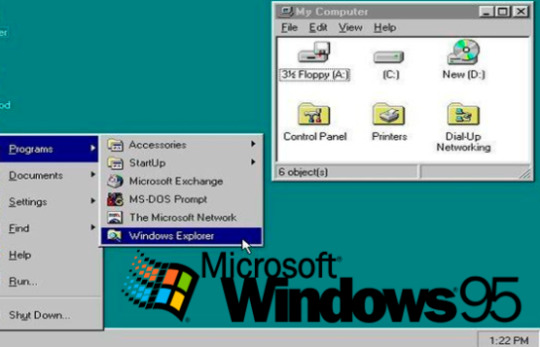
-Se facilita el uso de los dispositivos y la web
-Hipertexto
-http
-Páginas Web
-Windows 95: Uso de colores
-W. Explorer

-IPhone: sin tiene teclado - pantalla táctil
-Aplicaciones
-Pixeles ya no perceptibles: Se pueden realizar diseños de iconos más realistas.
1 note
·
View note
Text
Evolución Historica

ARPANET -> Crear sistemas de información para guardarla ante un ataque nuclear.
70' -> INTERNET (international network) -> padre del internet = Vinton Cerf.
80' -> Se crea Microsoft de manos de Bill Gates y Paul Allen.
LA EVOLUCION TECNOLOGICA FUE CRECIENDO A BASE DE METAFORAS
Apple Lisa -> Fue la primera computadora abierta al publico.
Metáfora del Escritorio -> Mostrar que todo en un escritorio normal puede estar en la computadora.
Sucesos importantes:
85' La creación de "Amiga 1000"
91' Hipertexto
91' Primera pagina Web
2007 Primer iPhone 1
Reflexión Personal:
El hecho de que la evolución tecnológica haya crecido a base de metáforas no es una casualidad, ya que si lo pensamos profundamente, el ser humano cada vez busca mas la comodidad y las cosas mas simples, un ejemplo de esto es la misma metáfora del escritorio, donde se trata de cambiar un escritorio real por uno virtual, teniendo asi mas organización de las cosas.
0 notes
Text
EVOLUCIÓN HISTÓRICA DEL DISEÑO DIGITAL
En el paisaje de la historia del diseño digital, ciertos hitos marcaron un viaje desde las computadoras imponentes y de acceso restringido hasta la conectividad global, transformando cómo nos relacionamos con la tecnología.
Arpanet (1958) En los años 50, las computadoras eran monumentales y de uso restringido, reservado para aquellos con conocimientos técnicos. Arpanet, concebido en 1958, sentó los cimientos para la interconexión de computadoras, sembrando la semilla que florecería en Internet.
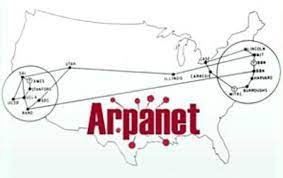
Red Mundial (1960) La década de los 60 vio una expansión de las redes, ampliando la conectividad entre computadoras y allanando el terreno para futuros avances en la comunicación digital.
Douglas Engelbart (1966) En 1966, Douglas Engelbart presentó el primer mouse, revolucionando la interacción humano-computadora y simplificando el manejo de las interfaces gráficas.
Inicio de Arpanet (1969) Arpanet, lanzado en 1969, fue el precursor de Internet, marcando el inicio de la interconexión global de computadoras.
INTERNET (Vinton Cerf) (1970) Vinton Cerf contribuyó al desarrollo de Internet diseñando su estructura fundamental y estableciendo los protocolos que posibilitaron la comunicación en línea.

Correo electrónico (Ray Tomlinson) (1971) Ray Tomlinson implementó el correo electrónico en 1971, presentando una forma revolucionaria de comunicación digital.

Microsoft (Bill Gates y Paul Allen) (1975) En 1975, Bill Gates y Paul Allen fundaron Microsoft, desempeñando un papel crucial en el desarrollo de software para computadoras personales.
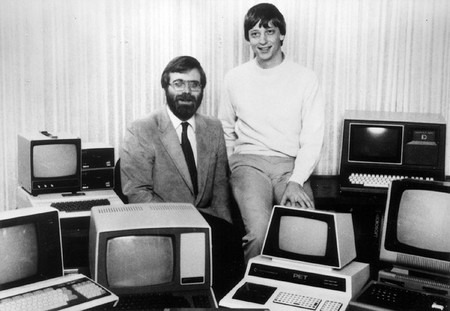
APPLE (Steve Jobs) La influencia de Steve Jobs en Apple se destacó por su énfasis en el diseño estético, marcando una diferencia clave con otras compañías.
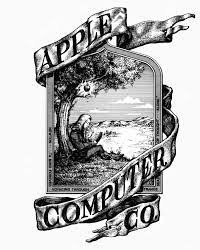
Xerox Star y Xerox Alto Las interfaces gráficas de Xerox Star y Xerox Alto influyeron significativamente en el diseño de las primeras computadoras personales.
Apple Lisa (1979) Apple Lisa, lanzada en 1979, fue la primera computadora personal accesible al público, representando un hito en la evolución de las interfaces gráficas.

GUI NeXT Computer (1990) La interfaz gráfica de usuario (GUI) en el NeXT Computer, desarrollado por Steve Jobs en 1990, enfatizó la representación de la personalidad del usuario.

Hipertexto Protocolo HTTP y WorldWideWeb (Primera página web) La creación del protocolo HTTP y la primera página web (WorldWideWeb) sentaron las bases para la World Wide Web.
Mac OS 9.1 (1999) y Windows 95 (1995) Mac OS 9.1 y Windows 95 consolidaron la metáfora del escritorio en sistemas operativos populares.

Mac OS X, Windows XP, Windows Vista, Snow Leopard Estos sistemas operativos reflejaron la evolución de las interfaces gráficas, desde la sofisticación hasta la crítica del exceso de metáforas.
Desarrollo de smartphones (Blackberry, iPhone 1) La llegada de Blackberry y el iPhone 1 en 2007 marcó el inicio de los smartphones, transformando la interacción con la tecnología.

Esqueumorfismo El esqueumorfismo, una técnica de diseño que retiene ornamentos o estructuras de objetos originales, influyó en el diseño de interfaces digitales.

Sistema operativo Android (2007) Android, lanzado en 2007, introdujo una alternativa en el mercado de sistemas operativos, marcando el comienzo de tendencias minimalistas.
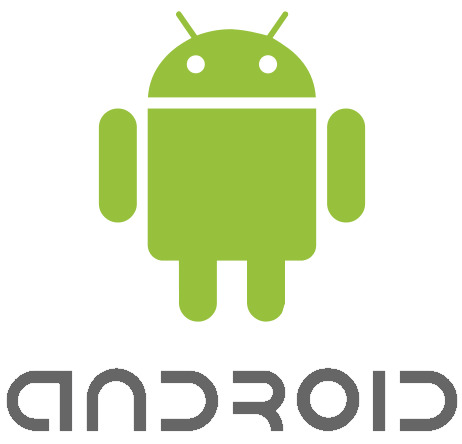
Mundo virtual y Kinect Tecnologías como Kinect conectaron el mundo virtual con el real, permitiendo la interacción con interfaces mediante el cuerpo.

Metáforas en la actualidad A pesar de la evolución, algunas metáforas persisten en iconos e interfaces, como los íconos de Photoshop, demostrando la importancia del contexto para su comprensión.
CONCLUSIÓN
La evolución del diseño digital representa un viaje desde metáforas literales hasta conceptos más abstractos, moldeando la manera en que nos relacionamos con la tecnología hoy en día.
1 note
·
View note
Text
HISTORYTAL - Viaje por la historia
Uno de los hitos fue lo sucedido durante y después de la Segunda Guerra Mundial y la Guerra Fría que impulsó muchos avances, por eso se considera a esta época como el génesis de las tecnologías de información.

1958: ARPANET : Para buscar la manera de descentralizar la información y además resistiera un ataque nuclear. Las computadoras eran como grandes calculadoras con hardware complejo.
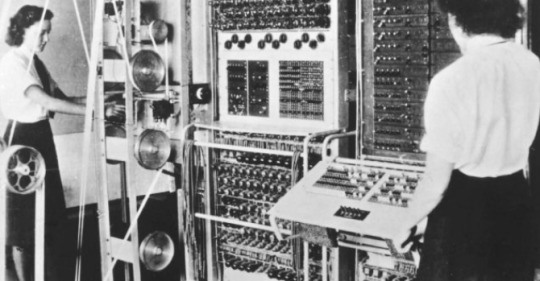
1958: Uno de los principales proyectos son ARPANET, uno de los primeros en la creación de internet
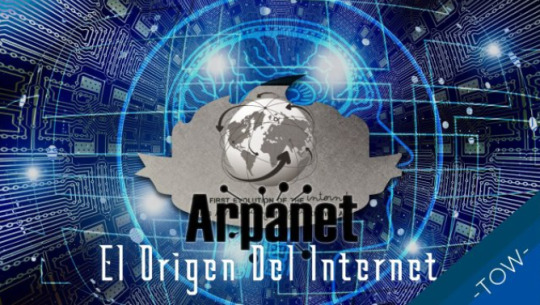
1960: Red Mundial – Joseph Carl Robnett empieza a soñar con centro de pensamientos como una gran biblioteca.

1966: Aparece primera interfaz gráfica con un sistema de hipertexto con la idea de conectar información, un concepto que te lleve a más información.

Primer Mouse: Douglas Engelbart creo el primer mouse en posición X-Y

1969: Arranca ARPANET: Primer enlace exitoso, enlace de dos laboratorios a 500 km de distancia el 29 de octubre a las 10:30 pm.

Internet empieza con la conexión entre bases militares y luego entre universidades.
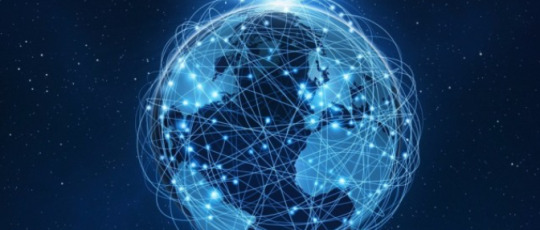
1970: Internet – Vinton Cerf – Bautizó a Internet (International Network) y tenia la idea de liberarlo para un acceso libre para la conexión mundial.
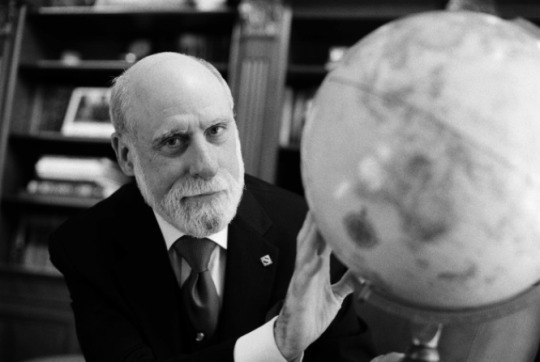
1971: Correos electrónicos: Roy Tomlinson – Primer programa de correo electrónico denominado CYPNET y el primer email fue “QWERTYUIOP”, a través de un software puedes escribir un mensaje y que llegue a otra parte y se con ello se define la lógica de funcionamiento.
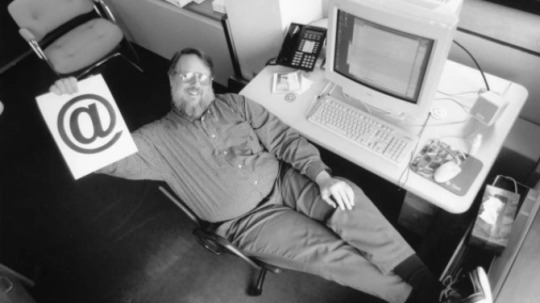
1975 MICROSOFT: Bill Gates y Paul Allen: En los 80's dominarían el mercado de las computadoras personales.

1976 APPLE: Steve Jobs y Steve Wozniak, ya se va moldeando la idea de la computación.
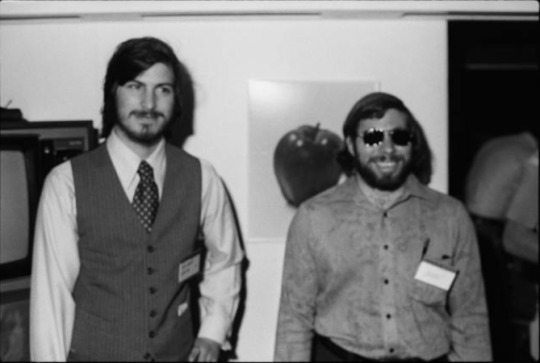
Apple está generando metáforas - Xerox Alto en 1973 fue la primera computadora en usar la metáfora de escritorio.

APPLE LISA 1979

1985: GUI de Microsoft - Windows

1985: Primera PC Multimedia – Amiga 1000

1990: Next Computer fundado por Steve Jobs tras su salida de Apple – La informática para el arte, contrata a Paul Rand (I <3 NY) para el diseño del logotipo. NeXT Computer fue otro fracaso por lo costoso.

1991: Hipertexto -Tim Berners Lee – conjunto de tecnologías que se centran en el “www”, sitios web.

1991: Tim Berners Lee crea el primer navegador WorldWideWeb

1999: Apple – Mac OS 9.1

1995: Windows 95

0 notes
Text
World Wide Web Founder – Tim Berners-Lee On The Evolution Of The IT Sector
What is the Internet and who founded the InternetVinton Cerf and Bob Kahn are the individuals to whom we can give credit for inventing the internet.

They designed the IT sector telecom protocols for the internet. In the beginning, this Internet wasn’t meant for long-distance communication, and neither did we have technology for it that could do so. It was created to establish a network between universities.
To Read Further - https://mundus2035.com/world-wide-web-founder-tim-berners-lee-on-the-evolution-of-the-it-sector/
0 notes
Text
Evolución histórica del diseño digital
11/08/2023
Arpanet (1958)
En la década de 1950, las computadoras eran voluminosas y de acceso limitado. Solo aquellos con conocimientos técnicos podían utilizarlas. Arpanet, creado en 1958, sentó las bases para la interconexión de computadoras y la eventual formación de Internet.
Red Mundial (1960)
La expansión de las redes en la década de 1960 permitió una conexión más amplia entre computadoras, allanando el camino para futuros desarrollos en comunicación digital.
Douglas Engelbart (1966)
En 1966, Douglas Engelbart presentó el primer mouse, revolucionando la interacción humano-computadora y facilitando el manejo de las interfaces gráficas.
Inicio de Arpanet (1969)
Arpanet, lanzado en 1969, fue el precursor de Internet y marcó el inicio de la interconexión global de computadoras.
INTERNET (Vinton Cerf) (1970)
Vinton Cerf contribuyó al desarrollo de Internet, diseñando su arquitectura fundamental y estableciendo los protocolos que permiten la comunicación en línea.
Correo electrónico (Ray Tomlinson) (1971)
Ray Tomlinson implementó el correo electrónico en 1971, introduciendo una forma revolucionaria de comunicación digital.
Microsoft (Bill Gates y Paul Allen) (1975)
En 1975, Bill Gates y Paul Allen fundaron Microsoft, desempeñando un papel crucial en el desarrollo de software para computadoras personales.
APPLE (Steve Jobs)
La influencia de Steve Jobs en Apple se destacó por su énfasis en el diseño estético, marcando una diferencia clave con otras compañías.
Xerox Star y Xerox Alto
Las interfaces gráficas de Xerox Star y Xerox Alto influyeron significativamente en el diseño de las primeras computadoras personales.
Xerox Alto, primera computadora en utilizar la METÁFORA DEL ESCRITORIO. Todo lo que tenías en tu oficina de trabajo, podías tenerlo en tu computadora. Todo dentro del mundo de las computadoras se las entiende por medio de metáforas, como la papelera o basurero, calculadoras, etc.
Apple Lisa (1979)
Apple Lisa, lanzada en 1979, fue la primera computadora personal accesible al público, representando un hito en la evolución de las interfaces gráficas.
GUI NeXT Computer (1990)
La interfaz gráfica de usuario (GUI) en el NeXT Computer, desarrollado por Steve Jobs en 1990, enfatizó la representación de la personalidad del usuario.
“La diferencia de apple con Microsoft es que Apple tenía buen gusto”.
Hipertexto Protocolo Http y WorldWideWeb (Primera página web)
La creación del protocolo HTTP y la primera página web (WorldWideWeb) sentaron las bases para la World Wide Web.
Mac OS 9.1 (1999) y Windows 95 (1995)
Mac OS 9.1 y Windows 95 consolidaron la metáfora del escritorio en sistemas operativos populares.
Mac OS X, Windows XP, Windows Vista, Snow Leopard
Estos sistemas operativos reflejaron la evolución de las interfaces gráficas, desde la sofisticación hasta la crítica del exceso de metáforas.
Desarrollo de smartphones (Blackberry, iPhone 1)
La llegada de Blackberry y el iPhone 1 en 2007 marcó el inicio de los smartphones, transformando la interacción con la tecnología.
Esqueumorfismo
El esqueumorfismo, una técnica de diseño que retiene ornamentos o estructuras de objetos originales, influyó en el diseño de interfaces digitales.
Sistema operativo Android (2007)
Android, lanzado en 2007, introdujo una alternativa en el mercado de sistemas operativos, marcando el comienzo de tendencias minimalistas.
Mundo virtual y Kinect
Tecnologías como Kinect conectaron el mundo virtual con el real, permitiendo la interacción con interfaces mediante el cuerpo.
Metáforas en la actualidad
A pesar de la evolución, algunas metáforas persisten en iconos y interfaces, como los íconos de Photoshop, evidenciando la importancia del contexto para su comprensión.
La evolución del diseño digital refleja una transición desde metáforas literales hasta conceptos más abstractos, influenciando la forma en que interactuamos con la tecnología en la actualidad.
0 notes